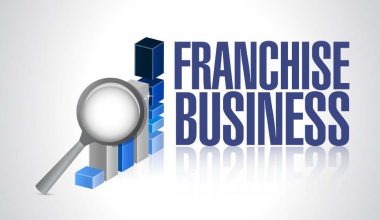Social selling is a lead-generating method that allows salespeople to communicate directly with prospects via social media platforms. This method challenges the traditional transaction experience between customers and businesses, resulting in more natural relationships with leads.
So, if you have a Facebook, Instagram, or LinkedIn business page, you may be practicing the fundamentals of social selling without even realising it. Companies use this method to listen in on their target audience’s conversations to uncover opportunities to connect and create relationships.
When done rightly, social selling can effectively replace the dreaded practice of cold calling.
This means that if you haven’t yet implemented social selling into your funnel, you’re likely losing business to more social media-aware competitors. However, once you’ve finished reading this article, you’ll have all the necessary information to make that adjustment.
Social selling is the process of connecting with prospects, developing a connection with them, and engaging with potential leads using a brand’s social media networks. The strategy can assist organisations in meeting their sales goals.
Consider social marketing to be modern relationship-building. Actively engaging with potential consumers on social media can help you become the first brand a prospect thinks of when they’re ready to buy. It can also replace old-fashioned relationship-building and sales tactics like cold phoning!
What Social Selling Is Not
It is not social selling to bombard people with unsolicited Tweets and DMs. That is considered spam.
Social selling is more than just adding new contacts to your contact list. It’s about making those conversations relevant and portraying your company as a problem-solver. When you do this, you increase your chances of gaining trust and loyalty.
What Is a Social Selling Index?
The social selling index (SSI) is a metric used to assess the effectiveness of a brand’s social selling initiatives.
The SSI concept was first offered by LinkedIn in 2014. The LinkedIn SSI calculates a score by combining four factors. It examines whether you are:
- A well-managed LinkedIn page
- Using the platform to find the right folks.
- Sharing interesting, conversation-starting content.
- Relationship development and maintenance.
Advantages of Social Selling
Social selling provides three major advantages to sellers marketing a professional brand or their personal brand.
It Fosters Trust
People want to conduct business with people they trust; thus trust is at the heart of the dealmaking and sales process. The labour of talking with your consumers and developing a personal relationship with them translates into establishing a foundation of trust so that they feel at ease with you and, as a result, with purchasing your product or service. For example, you can create a community around you and your company using a social media network such as Facebook or Instagram, giving individuals a sense of belonging (large or small).
It Pays off in the Long Run
Social selling does not encourage spontaneous purchases. It creates relationships with potential clients carefully and gradually and maintains those relationships after they become paying customers. Sweetwater, for example, assigns each customer to a “sales engineer” who sends monthly emails to check in and always follows up on a purchase with a direct note of thanks. This has resulted in significant repeat business for the company.
It Provides You With Information on Your Customer Base
When a firm commits to social listening and active consumer engagement, it learns a lot about what motivates those customers. In this way, social selling is both a sales and a market research strategy. Even if a social encounter does not result in a deal, it can supply the company with important information about the customer’s wants and interests. Businesses can use this data to influence future marketing campaigns, create new product designs, and improve product descriptions.
Reasons Why Your Company Should Have a Social Selling Strategy
If you’re still unconvinced about social selling, here are four reasons you should try it.
#1. Social Selling Is Effective
Take our word for it, but don’t just take our word for it. According to internal LinkedIn Sales Solutions data:
- Businesses that are social selling leaders generate 45% more sales possibilities than brands that have a low social selling index.
- Companies that prioritise social selling are 51% more likely to meet sales targets.
- 78% of businesses that use social selling outsell those that do not.
#2. Social Selling Assists Sales Professionals in Developing Genuine Relationships
A recent Forbes article states, “87% of business event professionals have canceled events because of the pandemic, and 66% have postponed events.”
Because of the COVID-19 pandemic, networking and relationship-building have gone online — and now is the ideal time to prioritise social selling.
Social selling allows you to increase brand exposure and interact with new potential customers on social media, where they’re already active and engaged in conversations. Using social listening technologies enables your sales people to go one step further and uncover leads who are already discussing your company, competitors, or industry.
That means you can go out to an audience interested in what you’re offering and interact with them authentically, providing relevant information when appropriate. Authenticity fosters trust, which can lead to customer loyalty.
#3. Your Consumers (And Prospects) Are Already Utilising Social Selling
25% of Americans aged 18 to 34 made a social media purchase in the last six months of 2020. In India, the United Kingdom, Australia, and New Zealand, almost one-third of those aged 18 to 34 made a purchase through social media over the same time period.
Given the sheer number of people who use social media today, the opportunity for brands to make social sales is enormous:
- Social media is used by 4.2 billion people globally.
- In 2020 alone, social media networks attracted 490 million users.
- This represents a 13.2% increase above 2019’s growth rate of 7.2%.
- Around the world, people use mobile phones, the internet, and social media.
Furthermore, many of those users conduct brand research on social media networks. Simply put, these customers are getting ready to buy.
#4. Your Main Competitors Are Already Selling on Social Media
Staying competitive requires the use of social selling. Other brands are present on prominent social media networks, communicating with potential clients. According to Statista, “in 2020, an estimated 25% of e-commerce enterprises worldwide were planning to sell their goods on social media.”
Consider the following figures:
- 200 million Instagram users view a profile at least once every day, and 81% of Instagram users use the platform to investigate products and services.
- In 2020, 18.3% of American Facebook users made a transaction through Facebook.
- 70% of YouTube viewers have purchased a brand’s product after seeing it on the platform.
- LinkedIn is used by 96% of B2B content marketers for organic marketing. Facebook is the second most popular platform, with 82% of B2B content marketers using it.
What Is a Social Selling Strategy?
Making meaningful connections with potential clients, discovering their problem spots, and determining how your products and services may suit their requirements are all part of the process. Social selling aims to connect with your customers and create genuine trust in the hopes of eventually generating a transaction.
Here are the four most important components of a social selling strategy.
#1. Choosing the best social selling platforms
Social selling occurs through online social network platforms. Because of their emphasis on discussion, Facebook and Twitter are popular among salesmen.
Instagram, TikTok, and Snap cater to younger audiences, but LinkedIn is ideal for professional networking.
Comment threads on Reddit and YouTube frequently attract enthusiasts with in-depth knowledge of a topic as well as people looking to learn. Companies keep these pages up to date by sharing content relevant to their customers’ apparent interests. Beyond simply posting, they engage and connect with their consumers through the comments area on posts or YouTube videos, AMA (Ask Me Anything) forums on Reddit, or retweeting a follower’s tweet.
#2. Targeting Potential Buyers With Built-in Tools
Many internet platforms provide social selling solutions that direct businesses to their target base. Lead generation and a statistical breakdown of who is visiting your pages are included in these features. According to LinkedIn, which specialises in business-to-business (B2B) transactions, social selling tools can significantly impact company-customer connections. They also state that 62% of B2B buyers preferred salespeople who knew something about their business strategy, objectives, and pain points.
#3. Use Third-Party Solutions to Increase Your Web Visibility
Social selling tools are not confined to a platform’s basic functions. Other companies, such as Salesforce, Hootsuite, and Amplify, have created solutions that allow businesses to seamlessly engage with clients across many channels. These tools are especially effective for communicating with a consistent message, ensuring that a receiver receives the same message whether they see it on Twitter, Facebook, Instagram, or from an email mailing list.
#4. Listening First Before Selling
Whether you are promoting a business or personal brand, beginning your contacts with social listening is beneficial. This entails listening in on internet discussions to hear what people say about your product, noting customer pain points or things they like about your firm, and creating your messaging around it.
You participate in these conversations and respond to people’s questions but don’t go into salesperson mode. The idea is to have genuine talks rather than to make a hard pitch.
How to Select the Best Social Selling Platform for Your Business
Choosing a social selling platform is mostly determined by an honest self-evaluation of your brand.
This platform is ideal for business-to-business connections. LinkedIn is a business-to-business (B2B) network where people enhance their personal brands in order to promote themselves as employees or business partners. It includes a proprietary tool called the LinkedIn Sales Navigator, which assists you in targeting business clients in the same way that Google and Facebook may assist you in targeting retail customers.
Instagram has a very loyal user base. Instagram has around 200 million active users that utilise the service on a daily basis. According to the firm, 70% of modern shoppers would consider researching or purchasing a product via Instagram.
Instagram’s user population is younger than that of many other platforms, which means that organisations who target to younger audiences can benefit from an active Instagram presence. For example, in 2020, the US Census Bureau promoted the census actively on Instagram in order to entice younger people to participate.
TikTok
TikTok provides instant virility and a younger audience. TikTok’s exclusive algorithm allows social sellers to fast go popular. TikTok isn’t only for videos and memes; items go viral as well, and often sell out in a matter of days. While TikTok’s e-commerce approach isn’t as evolved as that of other social media platforms, such as Instagram, it’s rapidly getting more refined, thanks in part to a significant collaboration with Shopify. Companies may reach a younger audience by using TikTok to track and engage with viral trends, which they can then use to create their own viral content.
Facebook encourages both debate and commerce. According to a June 2020 eMarketer poll by Bizrate Insights, 18.3 percent of Facebook users had completed a transaction on the platform. The firm is attempting to capitalise on this trend by introducing Facebook Shops, its own in-house e-commerce platform. This can turn the Facebook platform into a one-stop shop for learning about and purchasing a product. Facebook is also noted for its extensive comment threads, which include those by product lovers who share their experiences on a brand’s official Facebook page. Long, substantive conversations naturally build social engagement and are an important aspect of social selling.
Twitter is useful for customer service. Twitter is a powerful discussion platform, particularly for customer service. Many social sellers use Twitter marketing to track mentions and take extra precautions to respond to unfavorable criticism. Because Twitter has not invested as heavily in e-commerce as Meta Platforms (owner of Facebook and Instagram), marketers rely on it for product discussions and feedback.
YouTube
YouTube is a great way to keep your audience updated and connected. Many large firms have a YouTube channel where they exhibit their products and provide relevant content that their consumer base may find interesting. The key to successful social selling on YouTube is to avoid making long-form television commercials. Engage your audience authentically, provide general-purpose information, and revenues will occur organically over time.
Read Also: SOCIAL MEDIA MARKETING AGENCY: How to Start and Grow One & Best Services 2023
Steps to Developing a LinkedIn Social Selling Strategy
Increase your credibility
Ask your connections for endorsements or recommendations if you have a solid relationship with them. These appear on your profile and can help you establish instant credibility with new contacts.
Make sure your brand’s profile demonstrates knowledge relevant to a potential consumer or client by showcasing how you’ve assisted past customers in achieving their goals.
You should also only share information and content from reliable sources, and have a professional tone throughout your LinkedIn engagement.
Increase the size of your LinkedIn network
Use LinkedIn’s search feature to broaden your network by looking for mutual connections with your current contacts.
You may also network with peers and prospects by joining LinkedIn Groups relevant to your industry.
Make use of LinkedIn Sales Navigator.
LinkedIn’s professional social selling tool, Sales Navigator, can help you enhance sales prospecting through targeted conversations and better analyse your success through in-depth statistics.
Twitter Social Selling
Twitter is an excellent platform for social listening. Twitter Lists can be used to monitor material from specified groups of individuals. Here are three major Twitter lists to get you started with social selling on the network.
Existing Clients
Keep an eye on this list for opportunities to respond to — or like — your existing customers’ Tweets. This will assist you in keeping your brand on their radar.
But don’t overdo it. Make sure your interactions with clients are meaningful: only like Tweets that you truly enjoy, and only comment when you have something useful to offer. And remember to stay relevant – your customers don’t want your brand interfering with their personal lives.
Prospects
Add potential customers to a private list as you identify them. However, do not interact with them in the same way that you do with established clients. Instead, keep a watch out for help requests or complaints about your competition. You can then respond with a useful comment (and the discussion can serve as organic social proof for other prospects).
Competitors
Adding competitors to a private list allows you to keep track of them without following them. This could provide inspiration for your own social selling initiatives.
Facebook Social Selling
There are two ways to begin social selling on Facebook.
Create a Facebook Page first, and then use these tactics to begin social selling.
Collaborate with other businesses
Connecting with others through likes, comments, and shares is simple. But take it a step further: if you generate thought-provoking, valuable material, it is more likely to be shared, expanding the reach of your business. As other businesses post and like your material, your Facebook Page may be exposed to a whole new audience.
Engage with your followers
Always respond to your followers’ comments and brand mentions. Include questions to stimulate dialogues with your audience when creating your own social media posts – they don’t have to be directly related to your product or service to be effective!
This travel operator asks a question and then responds with sea lion trivia before connecting the post to its business:
This method allows you to connect directly with your followers, which helps you create rapport and your image as an expert.
Best Practices in Social Selling
Whatever platform you use to target your specific audience, be sure you’re following tried and true social selling strategies. Here are four things to remember.
You Can Establish Your Brand by Delivering Value
Not becoming overly salesy while communicating with prospects and consumers via social media is critical. And, if your company is new to a social media platform, don’t go immediately into social selling. Before you start making sales pitches, establish yourself as an industry authority.
Sharing fascinating, valuable, and shareable material is one approach to grow your brand on social media for social selling. This could mean sharing material published by others that resonates with your brand on LinkedIn for B2B firms and business influencers:
Alternatively, it could imply creating and disseminating unique material that others will find valuable in order to develop your business (or personal brand) as an industry thought leader.
Listen Strategically and Cultivate Relationships With the Appropriate People
Paying attention is essential for effective social marketing. In other words, make certain that you are socially listening.
Monitor what others say about you, your company, your industry, and your competitors using tools like social lists and Hootsuite streams. Keep an eye out for pain spots and demands since both give natural opportunities for you to provide answers.
You should also use your current network wherever possible. Check their following and follower lists before reaching out to any of the prospects you’ve identified to see if you have any mutual connections. If you do, request an introduction from your shared contact.
Maintain Integrity
Take the effort to customise your social selling messaging rather than composing one note and sending it to a large number of potential consumers. As a result, you could:
- Recognise your mutual professional connections.
- Consider a piece of information that you both shared and reacted to.
- Draw attention to a mutual interest or something else you have in common.
To put it another way, be yourself. Start a genuine conversation to make a connection!
You could utilise automatic liking and commenting programs, but these will not help you create rapport. In fact, they can severely harm your personal and professional brand. Nothing beats dealing with a real person when it comes to selling.
Maintain Consistency
Finally, don’t anticipate instant gratification. Don’t give up if your relationship-building efforts don’t provide immediate benefits. Some contacts may not be ready to buy what you’re offering quite yet, so stay in touch.
Make contact with fresh leads. Contact someone you’ve previously connected with but haven’t heard from in a long time. Maintain meaningful relationships by congratulating them on new roles or companies and participating with the content they publish on social media. Prepare to offer advise or assistance, even if it does not directly market your product.
Related Articles
- LINKEDIN LOGO: Meaning, History, Font, & Design Influences
- HOW DOES LINKEDIN MAKE MONEY IN 2023
- LINKEDLN ADVERTISING: What It Is, Cost, Policies & How to Do It
- WHAT IS LINKEDIN: How It Works, Importance and Use in Business
- 2023 LINKEDIN MARKETING: Solutions, Ideas, Strategies & All You Need






